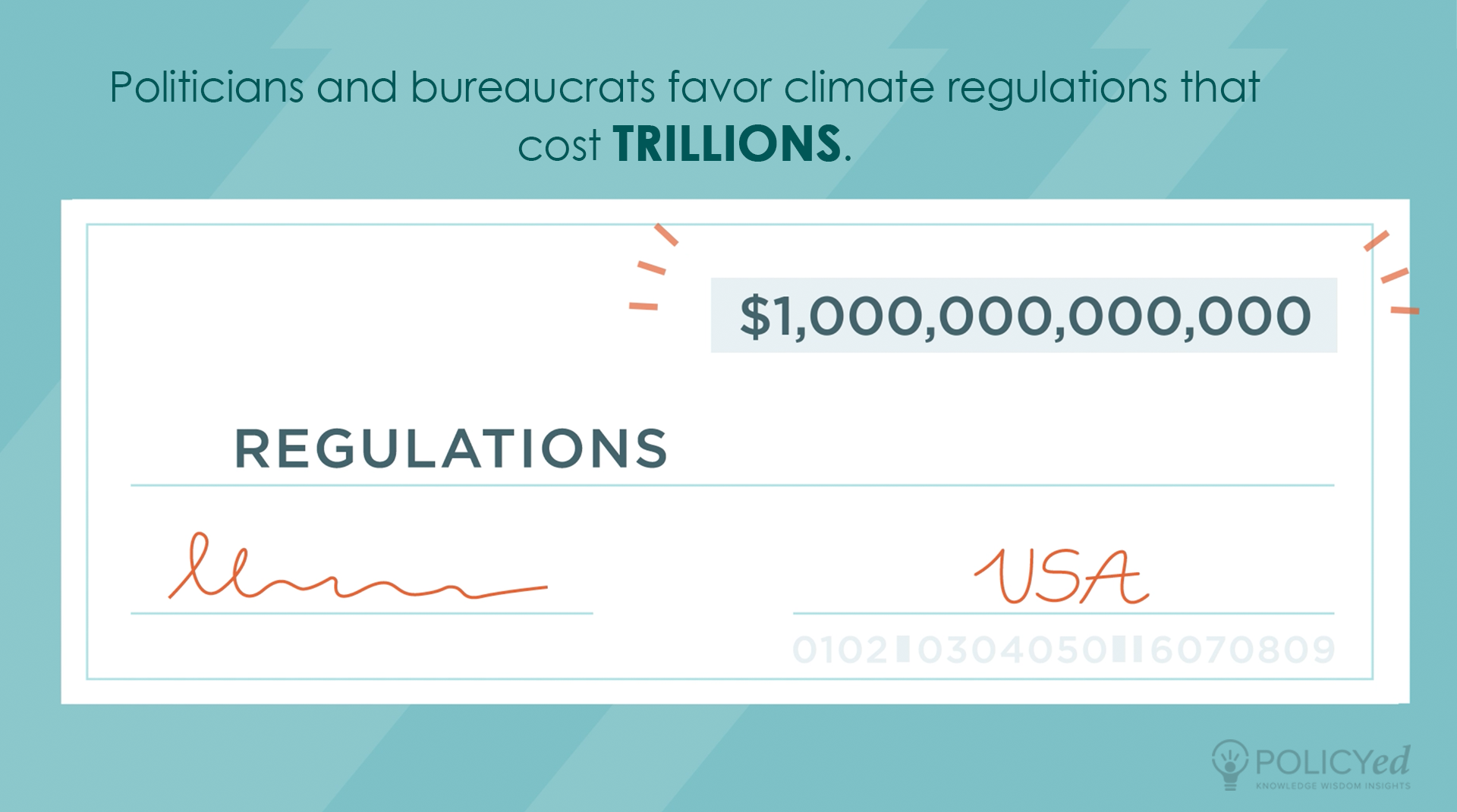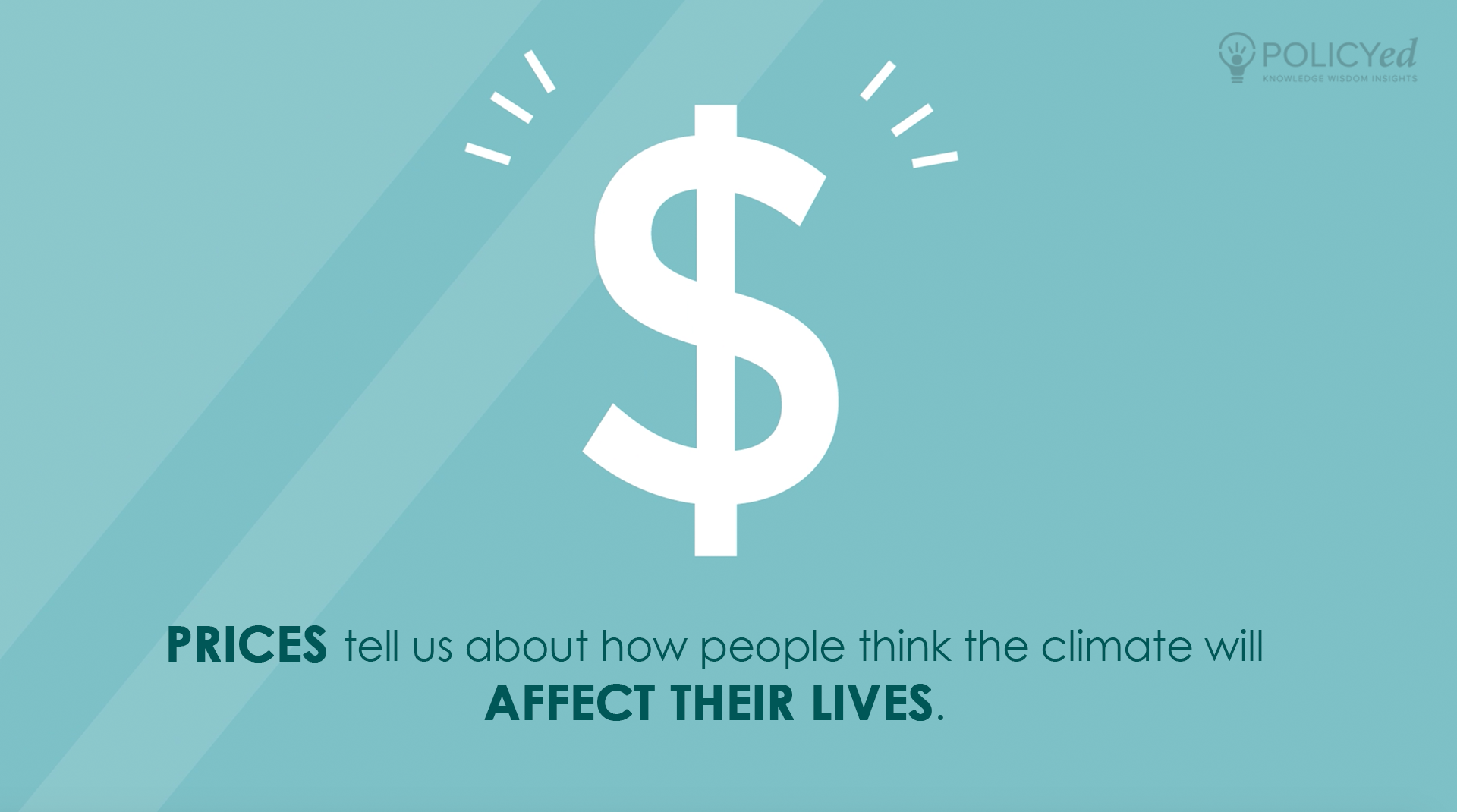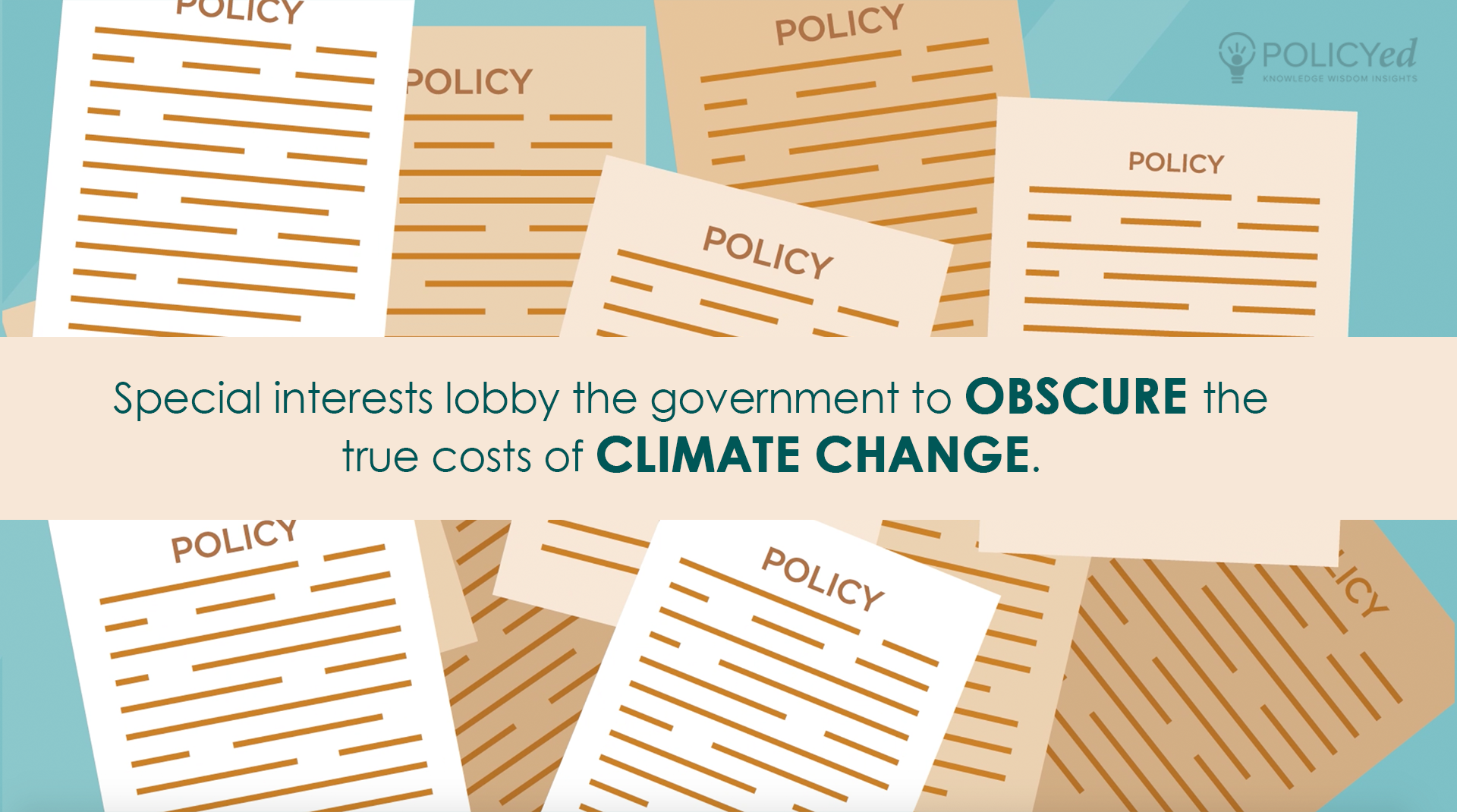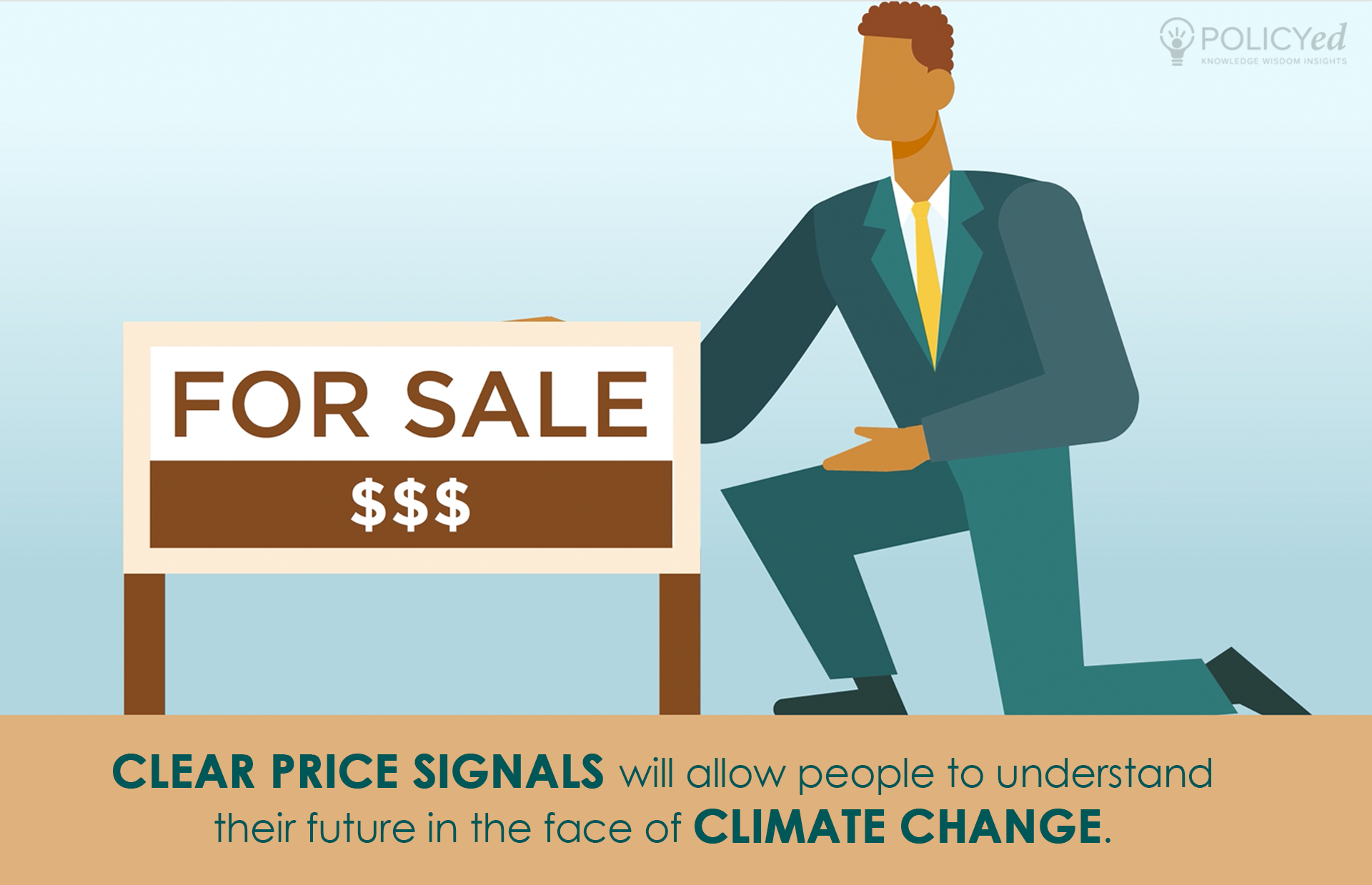Key Facts
Expensive Regulations
Debates continue over which policies are best suited to mitigate the effects of climate change. Not surprisingly, politicians and bureaucrats favor regulations that cost trillions. But there is a too-often overlooked alternative approach: human beings adapting to climate change in the face of changing prices.
Pointing to Prices
Prices tell us a great deal about how people think the climate will affect their lives. They help us discover where the greatest risks are. For example, the prices of oceanfront homes should reflect the risk that they may soon be underwater or require expensive technology to protect them. Farms located in areas that may be prone to future droughts should be less valuable.
Special Interests
Properties in places with lower risks should be in higher demand. But currently, government policies obscure the true costs of climate change. Special interests have lobbied governments to subsidize risky purchases. Governments subsidize flood insurance for oceanfront properties and spend taxpayer dollars to keep the water away.




